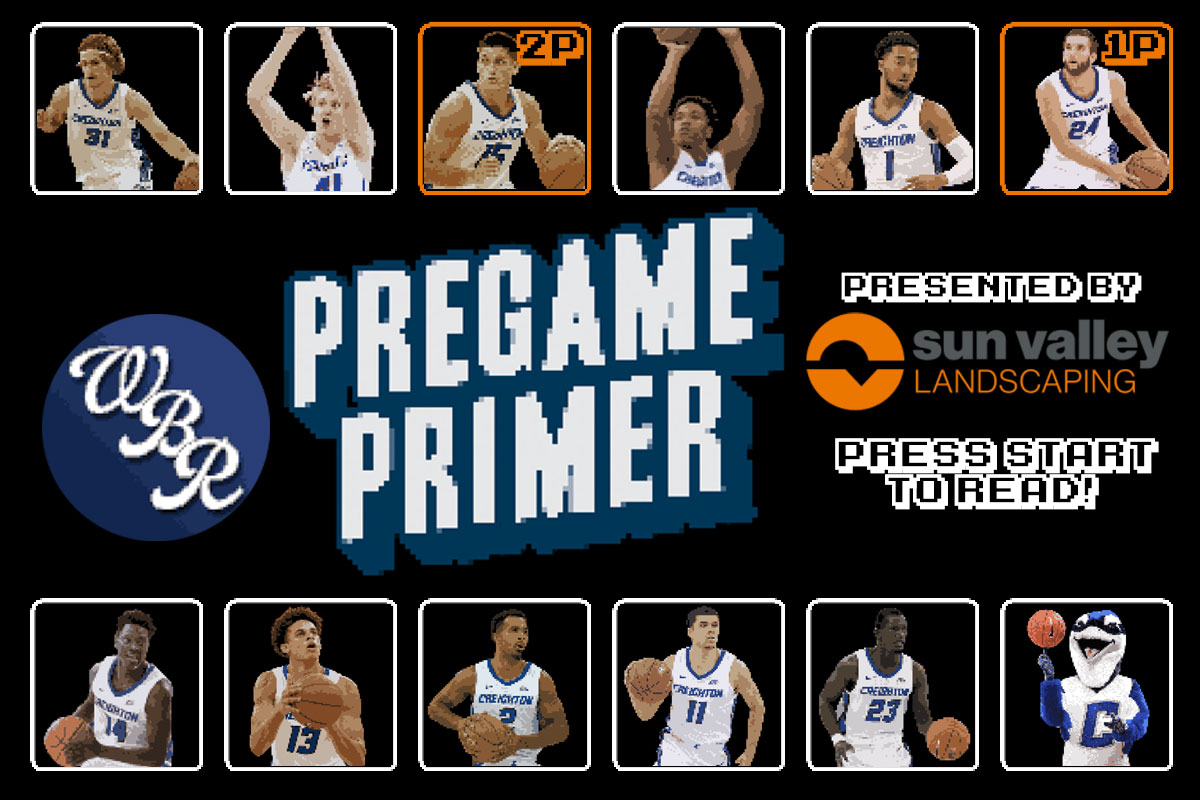[dropcap]Legendary[/dropcap] Bluejay coach Red McManus coined the phrase “border to border and coast to coast” in 1959 when he began the Travelin’ Jays era, where they took on any opponent, anywhere in an effort to play the best competition they could, as getting top teams to come to Omaha was tough. When Eddie Sutton took over a decade later, he expanded that strategy and played games in 36 cities and 20 states over four seasons, logged more than 65,000 miles in the air, and even went to South America for a foreign tour at a time when that was far from commonplace for collegiate teams. The 1973-74 media/recruiting guide offered this mission statement on the inside cover:
“Traveling is so much a part of the Bluejay basketball program that a basketball prospect should reflect on what traveling means to him before he signs with the Jays. Creighton University is in Omaha, a fine city…but one located a considerable distance from other major basketball powers…. So future Creighton Bluejays must be more than tall, talented and dedicated to hard work. They have to know how to pack a suitcase.”
That’s what the Bluejays of McManus and Sutton needed to do in order to test themselves against the best; as an independent the best weren’t going to come to Omaha, so the Jays went to them. The move to the Missouri Valley occasionally brought Top Five-quality teams here; it’s happened quite a bit since the move to the Big East. But in the non-conference? That’s still a rarity. A basketball unicorn, really.
Imagine what Red McManus would think this week, as the Bluejays get set to play the #1 team in the country in a non-conference game, and don’t have to travel to do it. He’d probably smile for a second, and then get back to the important business of telling the referees what a terrible job they’re doing from a seat at courtside.
***
The top-ranked Gonzaga Bulldogs were predicted to be great, but a win over #1 Duke in the Maui Invitational vaulted them to the top of the rankings. Before their game against North Dakota State this week, the Bison’s game notes had this scouting report:
“They’re really good, and they rarely lose.”
That’s hyperbole, but it’s also not that far from the truth. Gonzaga already owns wins over four Top 100 teams according to KenPom (#70 Texas A&M, #87 Illinois, #56 Arizona, and Duke), and is entering a stretch where they play four consecutive Top 50 teams (#34 Creighton, #44 Washington, #10 Tennessee, and #4 North Carolina). The game against UNC is the only one they’re not favored to win, and in fact, the only game the rest of the season they aren’t favored in according to KenPom’s projections.
Fresh off a 102-60 dismantling of North Dakota State, they come to Omaha with the third-best adjusted offensive efficiency in D1. Their possessions are over two seconds quicker (14.2 seconds) than Creighton (16.6), which tells you how fast they run, and their effective field goal percentage is a robust 61.7%. However, funny story: after their thrashing of Montana, Creighton has the best adjusted offensive efficiency in the country — 63.2%!
As Bluejay fans know, scoring that efficiently, and that quickly, means a team has piled up points — through seven games, Gonzaga has broken the 100-point mark three times, with two 60-point halves, four in the 50s and six in the 40s. Creighton hasn’t yet broken the 100-point mark, but they’ve had 93+ three times (and in three of their last four), with one 52 point half, and nine halves where they’ve scored in the 40s.
Creighton’s ideal game is one where they can run in transition, push the tempo, and score in the first 15 seconds of the shot clock. The same can be said of Gonzaga, except they’re better at it, they’re more adapt at forcing more methodical opponents to play that style, and they’re better defensively, both individually and as a team.
Forwards Rui Hachimura (6’8″, 230-pounds) and Brandon Clarke (6’8″, 215-pounds) have scored in double figures in all seven games. Hachimura has taken just over half of his 95 shot attempts at or near the rim, according to data from Hoop-Math.com; he’s connecting on 68.6% of those shots. One-third of his shots have been mid-range jumpers, which he makes 35% of the time. And though they constitute just 1/10 of his shots, he’s made 50% of the threes he’s attempted (5-of-10).
Making him even tougher to defend: he runs the floor extremely well, and a quarter of his shots have come in transition. When you include shots taken in the first 10 seconds of a possession (but not technically classified as in transition), that percentage jumps all the way up to 35%. Keeping track of a player Hachimura’s size during the disorganization of a transition game, and slowing him down, can be a tricky proposition. It’s little wonder that he’s averaging 21.9 points per game. The wonder is how he isn’t averaging even more.
Clarke is less of a jump shooter than Hachimura; 80% of his shots have come at or near the rim. He’s made a completely ridiculous 84.8% of those shots (39-of-46). The majority of his other shot attempts are mid-range jumpers, and he’s a solid 53.3% on those, though given the relative discrepancy it’s better to force him to shoot it away from the hoop if you can. Like Hachimura, he runs the floor well — a quarter of his shots have come in transition, too, and he’s making nearly 80% from the field when he shoots in transition. Yikes.
Clarke is averaging 15.9 points per game and a team-best 7.4 rebounds (including nearly three offensive boards a game). Particularly notable is that Clarke has grabbed 12.8% of available offensive rebounds when he’s on the floor this year, one of the better percentages in college basketball. Creighton doesn’t have anyone higher than 8.1% (Martin Krampelj) among players with enough data to qualify. Even a pre-ACL tear Krampelj last year, who was on pace for an all-Big East type season, only grabbed an offensive board 11.2% of the time. CU needs to be aware of where Clarke is anytime a shot goes up, and box him out.
With those two nearly automatic in the mid and low post, it’s tempting for an opposing defense try a double-team or some sort of “junk” defense. The problem is that they shoot 39% from three-point range as a team. And though the loss of Geno Crandall, a 6’3″ senior guard who’s sidelined 4-6 weeks due to injury, cuts into their depth, it oddly makes them tougher to defend — Crandall was a putrid 1-12 from three-point range this year. With him out, the seven primary rotation players in the Zags lineup all shoot 38.5% or better from three point range.
Most teams will struggle to defend Hachimura and/or Clarke one-on-one. Double one of them, and you’ll leave a shooter open somewhere else. Crowd the three-point line to take that away, and you give Hachimura and Clarke more real estate to operate in. And when it’s Hachimura or Clarke hitting the threes? That’s the stuff nightmares are made of, my friends. The defense stretches, with rim-protecting big men forced to guard away from the basket, and their guards take advantage to slash to the rim. Or you give Clarke an easy chance to grab an offensive board against smaller players.
And they’re doing this without 6’10” forward Killian Tillie, their second-leading scorer a year ago (12.9 points) while grabbing 5.9 rebounds a game. Tillie made 58% of his shots overall, and 47.9% of his three-pointers a year ago. And against Creighton last December, he was almost unstoppable with 21 points (9-of-16 shooting) with eight boards. Have pity on anyone who draws this team in the NCAA Tourney once Tillie has returned and played himself back into game shape. Mercy.
In the backcourt, 6’5″ sophomore Zach Norvell leads the way at 17.3 points, and is second on the team with 5.6 rebounds a game. As you’d expect with Hachimura and Clarke tearing defenses apart inside, Norvell generally does his damage elsewhere — 68% of his shot attempts have been three-pointers this season. He’s made 38.6% of them (22-of-57). And he’s been their primary scorer in transition, with 28 of his 84 shot attempts coming in transition — interestingly, he has a tendency to pull up for three-pointers in transition. 16 of his 28 shots in transition have been threes; he’s made just 28% (7), so at least at this point in time, that’s a bad shot for him and given all of the other things to be concerned about when guarding Gonzaga, I’d let him have it. Though it’s worth noting he was lethal in those situations a year ago, with 47 of his 87 shots in transition being threes, making 46% (!!) of them.
Senior point guard Josh Perkins is their fourth player averaging in double figures, at 11.4 points per game, and it’s saying something that we’re this far into the Primer before mentioning a player of his caliber. Perkins leads the team with eight assists a game (and has 56 through seven games, third-most in D1), and is a big reason the Bulldogs are one of just eight teams in the country averaging 20+ assists a game. Gonzaga is a great offensive team, and Perkins is the conductor of the orchestra. Or the head of the hydra if you’re more mythologically inclined.
Roughly half of his shots have been three-pointers, and when you add in two-point jumpers, seven of every ten shots Perkins takes are jump shots. As you’d expect with a player who’s that extreme of a jump shooter, he doesn’t draw fouls very often — he’s attempted just 16 free throws all season. He’s made 14 of them, though. Perkins played 38 minutes against Duke, and is probably going to play nearly every second any time Gonzaga finds themselves in a tight game — he’s used to playing at a fast pace and not wearing down, but if there’s an achilles heel to Gonzaga at this point in the season, it’s a lack of depth. It’s most concerning in the backcourt, and particularly behind Perkins.
The other starter is Corey Kispert, a 6’6″ sophomore averaging 9.0 points and 4.4 rebounds per game. With Crandall out, the primary reserves are Filip Petrusev (9.6 points, 4.6 rebounds in around 16 minutes a game) and Jeremy Jones (5.4 points, 4.9 rebounds in 15 minutes a night).
So that covers the offense, but compounding the problem for Creighton is that Gonzaga is not just an elite offensive team, they’re also tremendous defensively. The Zags have held 21 consecutive opponents under 50 percent from the field, and have held 77 of their last 81 opponents under that threshold. They have the 23rd-best adjusted defensive efficiency in the country, and have held opponents to a 44.7% effective field goal percentage (39th best). Oh, and they rank third in the country with 45 blocked shots, and their 6.4 blocks per game rank fifth in the nation.
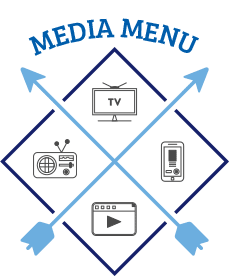
- Tip: 1:00pm
- Venue: CHI Health Center Omaha
- TV: FOX
- Announcers: Justin Kutcher and Donny Marshall
- Sideline reporter: Lisa Byington
- In Omaha: Cox channel 10 (SD), 1010 (HD); CenturyLink Prism channel 42 (SD), 1042 (HD); DirecTV 42; Dish Network 42 or 5203
- Outside Omaha: Your local FOX affiliate
- Streaming on FoxSportsGO
- Radio: 1620AM
- Announcers: John Bishop and Brody Deren
- Streaming on 1620TheZone.com and the 1620 The Zone mobile app
- Satellite Radio: Sirius channel 136, XM channel 210 (Internet channel 966)
- Gonzaga broadcast with announcers Tom Hudson and Adam Morrison
- For Cord Cutters
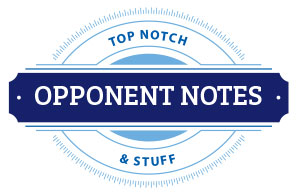
- Gonzaga is 90-24 in true road games since 2007-08, and their 78.8% winning percentage in true road games over that span is the best in the country. They’ve won 49 of their last 50 road or neutral court games in conference play (including the WCC Tournament).
- So far this season, Gonzaga has trailed for only 22 minutes and 41 seconds in the possible 280 minutes. If you do not include the Maui Invitational semifinal where Arizona led the Zags for 19:56, the Zags have only trailed their other five opponents for two minutes and 45 seconds.
- Brandon Clarke averaged 15 points and five blocks in the Maui Invitational, making 82.6% of his shots (19-of-23). Against previously-#1 Duke’s highly hyped big men, he blocked six shots, and made 7-of-10 shots. Meanwhile, Josh Perkins averaged 12.3 points and 8.3 assists in the Maui Invitational, and through six games has 56 assists to just 16 turnovers.
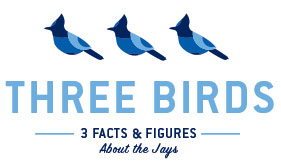
- Each of Creighton’s top three scorers this season are sophomores — Ty-Shon Alexander (18.3 ppg.), Damien Jefferson (11.9 ppg.) and Mitch Ballock (11.0 ppg.). Of Creighton’s 585 points this season, the sophomore class has scored 322 of them (55.0 percent).
- Creighton’s non-conference slate has been one of the toughest in the country so far; Gonzaga is the seventh straight opponent who won 23 or more games a year ago. Among those are three wins over premier mid-majors (Georgia State, Montana, and ETSU) who will likely finish in the top two of their leagues, and a ranked power conference foe in Clemson. And they still have Gonzaga, Nebraska, and Oklahoma to go.
- In their first 92 seasons, Creighton was 5-51 all-time against Top 10 opponents. In Greg McDermott’s eight-plus seasons, the Jays have equaled that win total — he’s 5-13 against top ten teams. Similarly, Creighton went 18-115 against Top 25 foes in their first 91 seasons; they’re 14-26 in McDermott’s tenure. And since the start of the 2016-17 season, CU has NINE wins over ranked teams, 11th most nationally.
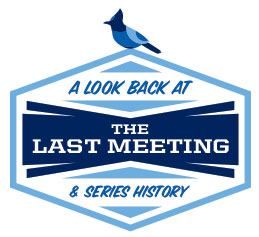
Creighton and Gonzaga have played nine times, with the Bluejays winning six of them — though before last year’s game in Spokane, they hadn’t met since a 100-83 Bluejay win 1977.
In that meeting a year ago (ironically, also on December 1), CU led for the first 23 minutes by as many as eight points. From our recap:
After taking a 44-37 lead at halftime, they were steamrolled in a second half that saw them give up 54 points.
On their first 10 possessions of the second half, they had four turnovers, had three shots blocked at the rim, and found themselves caught in an avalanche of their own creation.
“All of those resulted in runouts the other way for them, where now your defense isn’t set, you’re scrambling, you’re mismatched,” Coach Greg McDermott said on his postgame radio show. “And most of the resulting shots were layups.”
The resulting 21-4 run for the Bulldogs, turning a 46-39 Creighton lead into a 60-50 Gonzaga advantage, happened fast and the Jays seemed helpless — or hapless — in trying to stop it. And the McCarthey Athletic Center crowd that CU had done such a good job of quieting in the first half suddenly became a huge factor.

Gonzaga blog “The Slipper Still Fits” highlighted 10 storylines from their win over North Dakota State this week. It’s a must-read for Jays fans in preparation for Saturday’s game; the first two notes in particular:
Brandon Clarke’s motor is always running hot. He’s really good about getting down the floor in defensive transition to put himself in position to block, or at the minimum, alter what should be an easy layup for opposing players. He was dominant from the offensive end too, and has established great chemistry with Perkins and Norvell in the pick and roll.
Zags were switching 1 to 5 in the first, and on one defensive possession Clarke found himself on the perimeter with Perkins covering his man in the post. Clarke was able to keep the Bison’s guard in front of him, while Perkins did a great job preventing an easy entry pass resulting in the ball being batted away and creating a transition opportunity. That play highlighted why the Zags have the luxury of being so aggressive with their switches in defending ball screens.
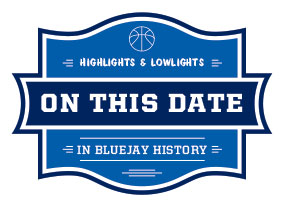
On December 1, 1987 the Jays beat Nebraska-Omaha 61-60 thanks to last-second heroics from James Farr, and a couple of key plays from freshman Bob Harstad. The future Bluejay great rebounded a missed three-point shot by guard Duan Cole and scored to give Creighton a 55-52 lead. Then with 3:26 left, he rebounded a missed free throw by Rod Mason, shot and scored again to give the Jays a 57-52 advantage. UNO took the lead on back-to-back threes by Bryan Leach, leaving the Jays just eight seconds for a last shot. With all 6,217 fans in the Civic Auditorium — and everyone on UNO’s bench, for that matter — knowing who would get the ball, Farr took a pass in the backcourt and dribbled through UNO’s defense for a layup with two seconds remaining that gave the Bluejays a 61-60 victory.
He told the World-Herald after the game, “Coach Barone told me to get the ball, take it down and penetrate and make something happen if I had the shot take it, if not, penetrate and dish off. Fortunately, everybody stayed with their man, so I just took it to the basket.”
Also on December 1, 1999, the Jays traveled to Atlanta to take on Georgia State in the road portion of a 2-for-1 deal. They moved to 3-0 on the season, as junior Ryan Sears was 19 points on 5-of-8 shooting from three-point range and a perfect 4-for-4 free throw performance, along with three assists and three rebounds. Fellow junior Ben Walker contributed nine points along with a team-high seven caroms, although Creighton was outrebounded 33-24 for the game. The game was played in front of a robust 1,031 fans at the Georgia State University Sports Arena.
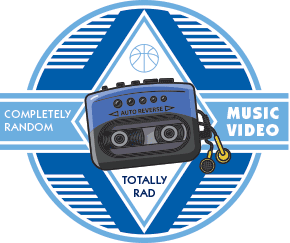
Archie is a weapon best deployed strategically, and only when necessary, so as to maximize it’s effectiveness. I don’t take that lightly.
With that said, WE READY.
The Bottom Line:
“What’s cool about this is that we’ve been trying to get this game forever,” Greg McDermott said on Gonzaga on his postgame radio interview Wednesday night. “I wish I had a dollar for everybody who asked me in the first five years I was in this job, ‘Are we ever going to schedule Gonzaga?’. Our fans have been waiting for this game for as long as I’ve been here. And to play them now, when they’re ranked number one and especially with them coming off of beating a team in Duke that appears to be really, really elite adds even more fuel to the game.
We’re going to need this place rocking. We need to make it as hard on them as we can from a crowd perspective, because they’re a very disciplined team on both ends of the floor. They don’t beat themselves. We cannot be the team that makes the most mistakes. We have to do what we do, and do it as well as we can. And we have to do it as mistake free as we can.”
Tell you what, Bluejays. You take care of rebounding and keeping turnovers to a minimum, we’ll take care of getting the arena rocking, and who knows? Maybe we can make an upset happen.
There was no Vegas line on this game at time of publication; KenPom predicts a three point Gonzaga win. I think that’s a bit closer than it’ll end up. CU keeps it close all afternoon and the Zags pad the margin with free throws late.
#1 Gonzaga 85, Creighton 79

